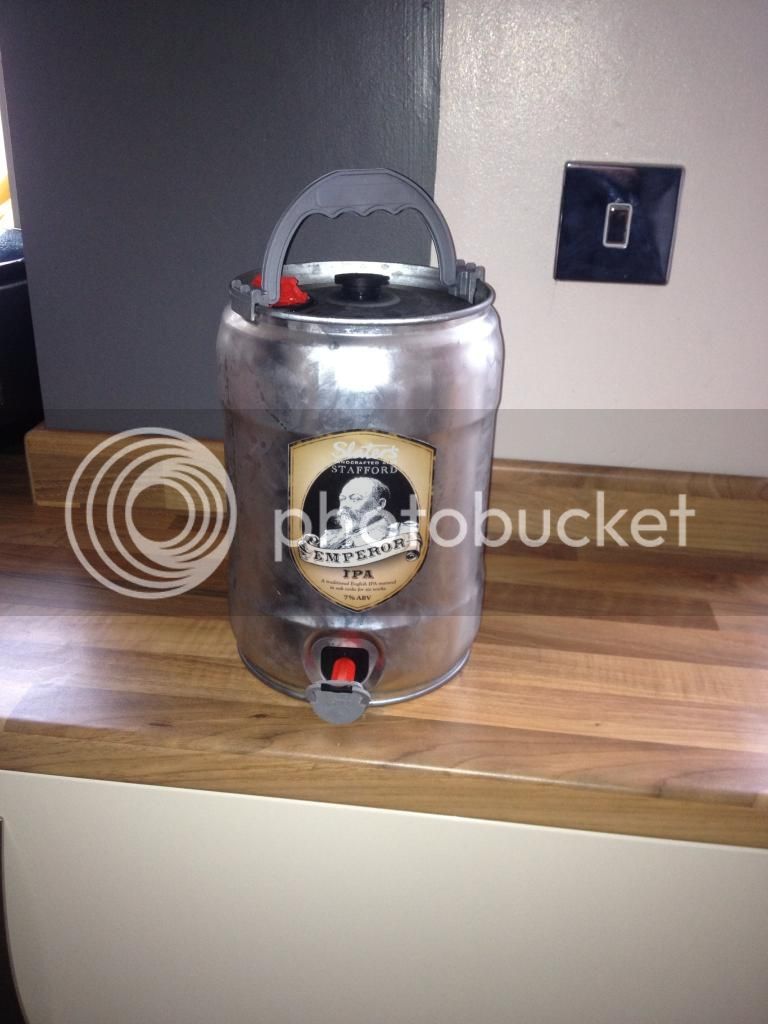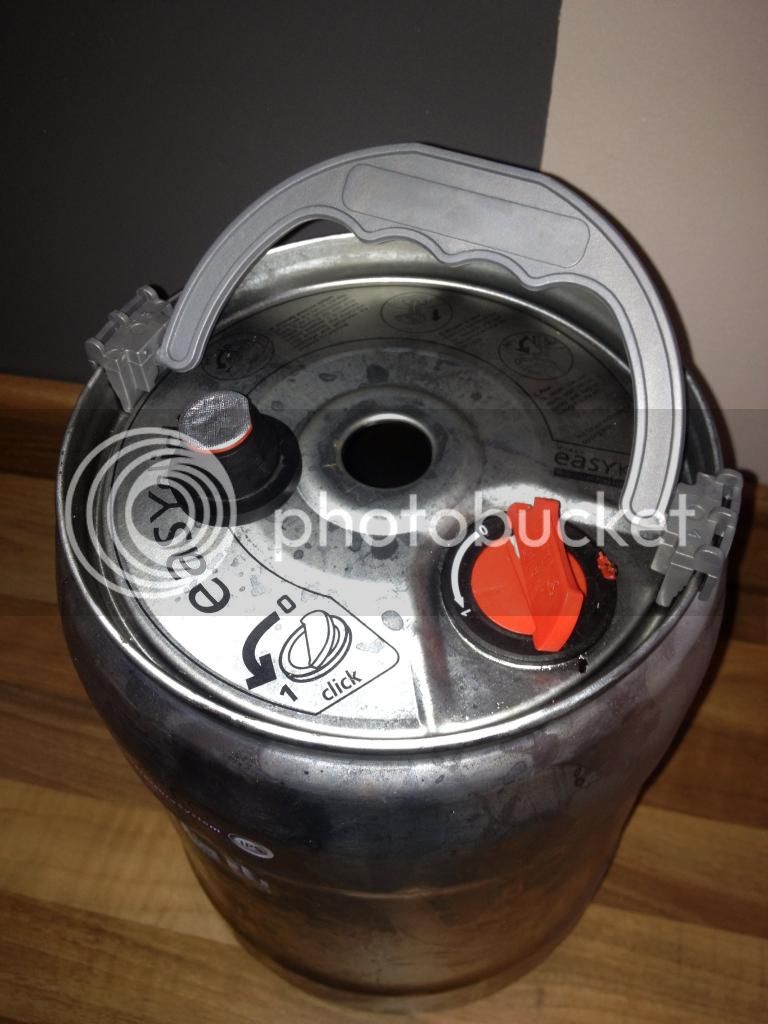MacKiwi said:Hi Steve - I use these, both ones I've purchased from an online homebrew store, and ones from a brewery that I re-use. They are the same kegs, apart from the branding.
I don't see any gas cylinder though - so are we talking about the same thing? The kegs at the top of this thread are the ones with the red tap at the bottom, and wee valve in the top. Once you've opened the valve, the contents drain via gravity (once the initial pressure has subsided).
These kegs cost £5 to buy new online, so if you can get a full one for £15, the beer is only really costing you £1 a (metric) pint. If it's decent beer, that's not bad :)
I prime mine, and so far this has worked ok. I normally batch prime and then fill bottles and mini-kegs from the same bucket. One poster in some thread indicated that the kegs had a maximum priming rate much below what you would normally use for bottles, but I've not been able to find this info anywhere.
You asked for a piccy...

Note the red tap at the base. The other 5 litre kegs you see have no top, and use some little CO2 cyclinder and a tap that goes int the top valve. I've never used these.
The link at the top reckons 20g per 5L, which is 2g per metric pint. I'm guessing that most batch priming for bottles would be a bit more than this. The only thing I read from the above was that they didn't recommend anything REALLY fizzy like ginger beer. Anything up to a reasonably carbonated lager (4g per metric pint) would probably be fine :)











































